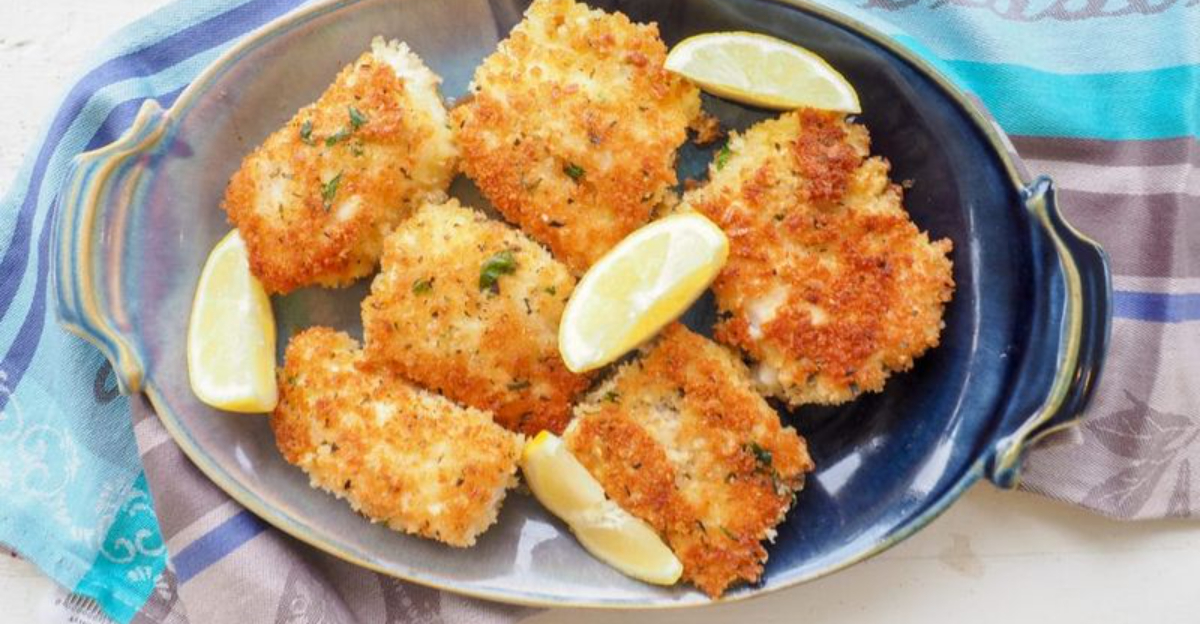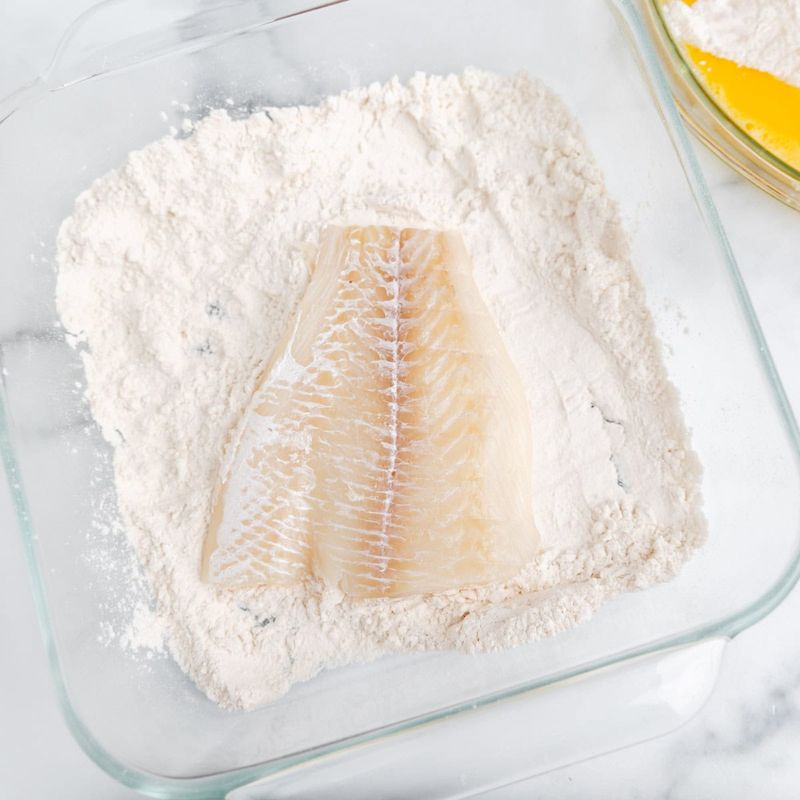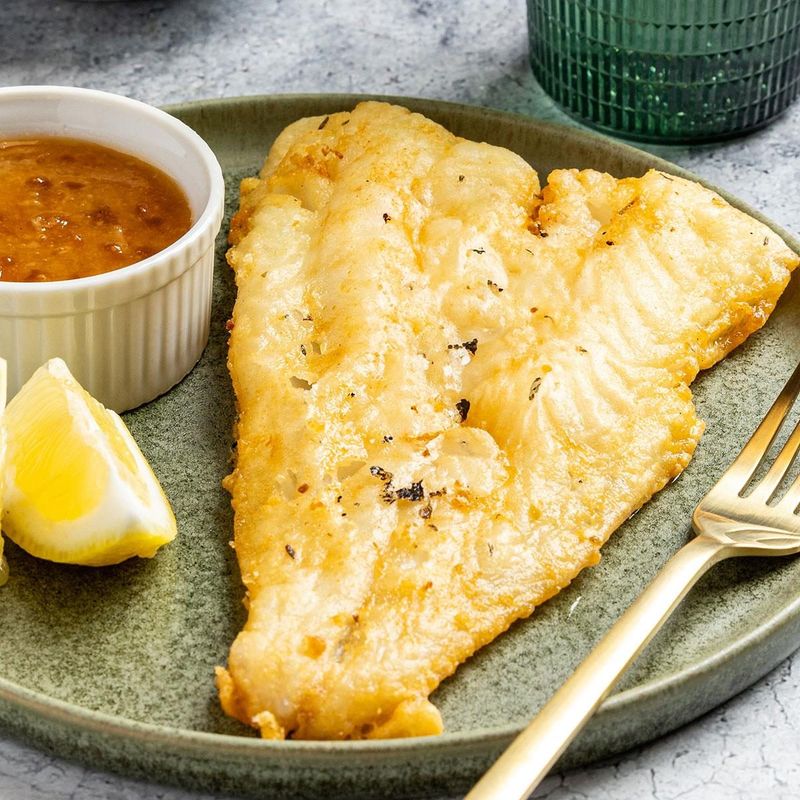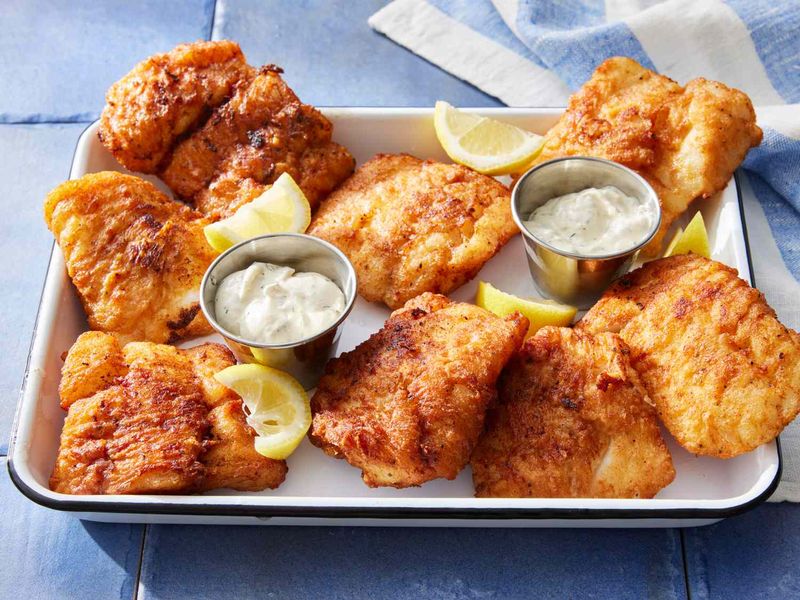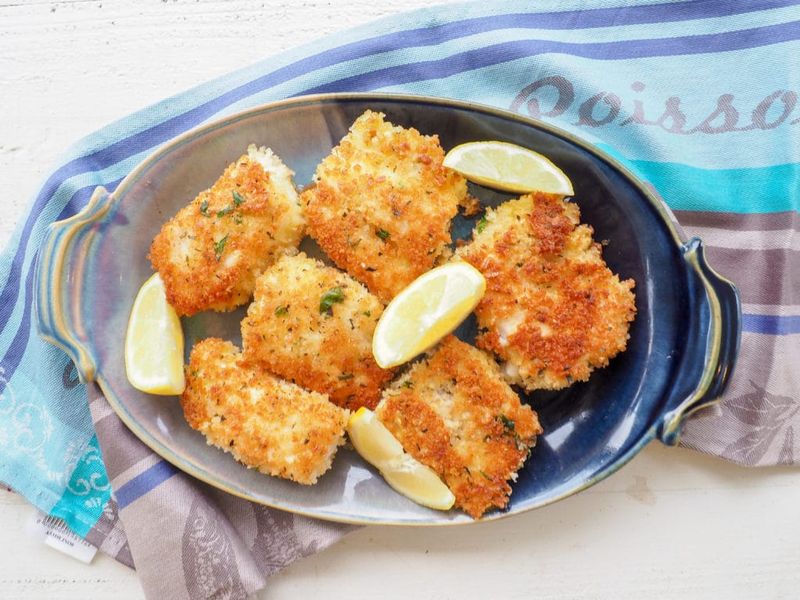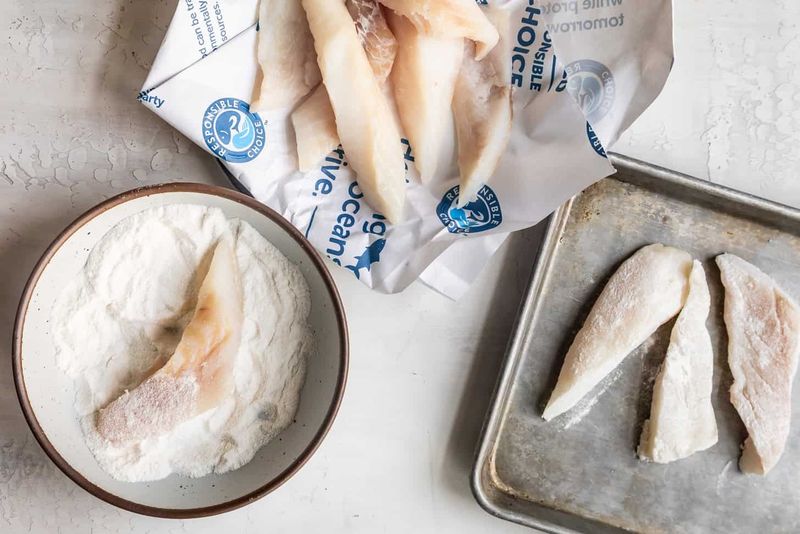Getting fish perfectly crispy is one of those kitchen goals that sounds simple—until you try it. I’ve had my fair share of soggy fillets, oily pans, and coatings that slide right off the moment I flip them. So, I decided to do what any determined home cook (and crispy-skin enthusiast) would: test every popular method out there. Five techniques later, one clear winner emerged—and it might surprise you.
5. The Classic Flour Dredge
I started with the most basic approach, the one most of us learn first: pat the fish dry, dust it with seasoned flour, and pan-fry it in a shallow layer of oil. The process itself feels almost comforting—simple, quick, and familiar.
As the fish sizzled, the kitchen filled with that warm, toasty aroma that always makes you believe you’re doing something right. When I lifted the fillets from the pan, they looked like perfection—golden, delicate, and promising a beautiful crunch.
But that promise didn’t last long. As soon as the fried fish hit the plate, I could see the surface dulling slightly. Within minutes, the crust that had looked so crisp began to soften, and when I tried to flip a piece, the coating peeled away like thin paper.
The texture underneath was fine, but the crust itself had no staying power. It reminded me that sometimes, the simplest method delivers the most fleeting results. Flour alone just can’t stand up to the steam that escapes from tender fish—it absorbs it, turning what should be crisp into a gentle sogginess that never recovers.
4. The Cornstarch Trick
After the flour flop, I decided to go with something I’ve seen in countless “crispy hack” videos: the cornstarch-only coating. I mixed a bit of salt and pepper into the cornstarch, patted my fish dry again, and gave it a light, powdery coat.
The moment the fillets hit the oil, I could tell something was different—the bubbles were finer, the sizzling more active. When I lifted the fish out, it looked beautifully golden, with a delicate, glassy crust that promised a thin, tempura-like crunch.
And for a glorious few minutes, that’s exactly what it was. The first bite was crisp and airy, almost ethereal, like the coating would shatter with a whisper. But after five minutes on the counter, the magic began to fade.
The surface grew sticky, and the crisp shell started to soften under its own moisture. It was still tasty, but that satisfying crunch was gone.
3. The Beer Batter Approach
Few things in life compare to a good piece of beer-battered fish. It’s the star of fish and chips, and for good reason. I whisked together flour, baking powder, and a generous pour of cold beer until it reached a light, bubbly consistency.
The first bite was heavenly—airy, crispy, and full of flavor from the beer. But beer batter is a bit of a diva. The frying temperature has to be just right. When the oil dipped even slightly below 375°F, the crust started absorbing oil, becoming heavy and greasy. Too hot, and it burned before the fish cooked through.
When it works, beer batter is unbeatable for that classic, pub-style crunch. But for everyday cooking, it’s unpredictable. If you’re not ready to babysit the thermometer or deal with splattering oil, this method might be more stress than it’s worth.
2. The Panko Power Move
If crunch had a mascot, it would be panko breadcrumbs. These flaky Japanese-style crumbs have long been the go-to for crispy textures, so I was eager to see how they’d perform on fish. I went the traditional route—flour, egg wash, then a thick coat of panko—before frying them in a hot skillet.
The results were impressive to look at. Each piece came out evenly golden, with a sound you could practically hear across the kitchen. The texture was undeniably crunchy, and it held up well even after sitting for a few minutes.
But the flavor and mouthfeel leaned a little too close to breaded chicken rather than crisp-skinned fish. When I tested the same method in the air fryer, the crust was crisp but felt a bit dry—more “toasted” than “fried.”
1. The Cornstarch + Rice Flour Combo (The Winner!)
Finally, I turned to a method popular in Asian kitchens: a simple blend of cornstarch and rice flour. I mixed equal parts, added a little salt and garlic powder, and lightly dusted my fillets before dropping them into hot oil.
Within minutes, I knew I’d found the one. The crust was whisper-thin, evenly golden, and audibly crisp. Even after sitting out for several minutes, the fish stayed crunchy, and the coating never turned greasy. It was exactly the kind of crisp you hope for—light, shattery, and perfectly paired with the tender fish beneath.
Rice flour and cornstarch complement each other beautifully. The rice flour brings a delicate, dry texture, while cornstarch provides the crunch factor. Together, they create a shell that locks in moisture without becoming heavy. It’s a balance that no single flour or breadcrumb could achieve on its own.
